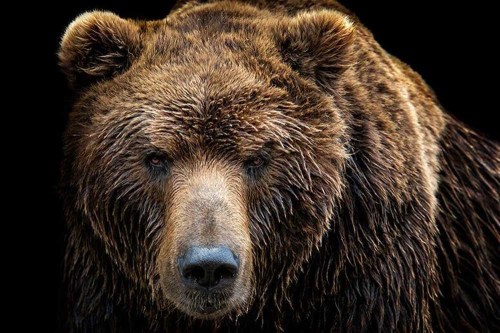Feds propose airlifting grizzly bears into north-central Washington
Published 12:00 pm Friday, September 29, 2023
The U.S. Fish and Wildlife Service proposed Sept. 28 to airlift grizzly bears into the North Cascade Range in north-central Washington, building up a population of at least 25 bears over five to 10 years.
Up to seven bears a year captured in Montana, Canada or Yellowstone National Park could be released in North Cascades National Park, Ross Lake National Recreation Area and federal wilderness areas.
USFWS also proposed relaxing some Endangered Species Act protections to allow land managers to haze, move or lethally control bears that come into conflict with people and livestock.
A grizzly bear has not been seen in the North Cascades since 1996. A cub has not been seen since 1991. The USFWS this year concluded there are no grizzlies left in the region.
Environmental groups advocate reintroducing them, while legislators and county commissioners representing areas that would be most directly affected by grizzlies have generally opposed reintroduction.
Residents’ pleas ignored
Okanogan County Commissioner Andy Hover said Friday that with federal agencies determined to bring in grizzlies, local residents will have to try to influence how the bears are managed.
“For all our saying, ‘You shouldn’t do it, you shouldn’t do it,’ they’re going to do it anyway,” he said. “The best you can hope for is to mold the rules.”
Federal agencies have talked for three decades about putting grizzles in the North Cascades. The Trump administration stopped planning by the Obama administration. The Biden administration then revived the project.
“We’re happy to see this moving forward again. Hopefully, the agencies will see it to completion this time,” Center for Biological Diversity carnivore conservation legal director Andrea Zaccardi said.
More grizzlies envisioned
Along with the newest proposal, USFWS and National Park Service on Thursday released a draft environmental impact statement on reintroducing grizzly bears.
The federal agencies envision 200 grizzlies eventually populating the North Cascades, but that could take 60 to 100 years because bears reproduce slowly, according to the environmental report.
In the near term, the agencies propose to import bears until there are 25. The agencies expect to haul in at least 36 bears. Some will die while being captured, transported and released, according to the report.
Bear mortalities were deemed an “unavoidable adverse impact.” Bears would have to be dropped in by helicopter because release sites would mostly be in roadless areas, according to the agencies.
Impact on livestock
Once the population reached 25 bears, grizzlies would kill two to three cattle and at most one sheep a year, the agencies estimated. The agencies noted concerns about the safety of hikers.
The agencies proposed designating the imported bears as a “nonessential experimental population” under section 10(j) of the ESA.
The designation acknowledges that reintroducing grizzly bears into the North Cascades is not necessary to ensure the survival of the species and allows for rules giving land managers more leeway in removing bears.
Zaccardi said she would have preferred the USFWS propose full ESA protection for a threatened species. “I think we’ll be looking at the 10(j) rule pretty closely and will be making recommendations,” she said.
The USFWS estimates there are about 2,000 grizzly bears in Idaho, Montana, Wyoming and the northeast corner of Washington. Areas with grizzlies can spare some for the North Cascades, according to the agency.






